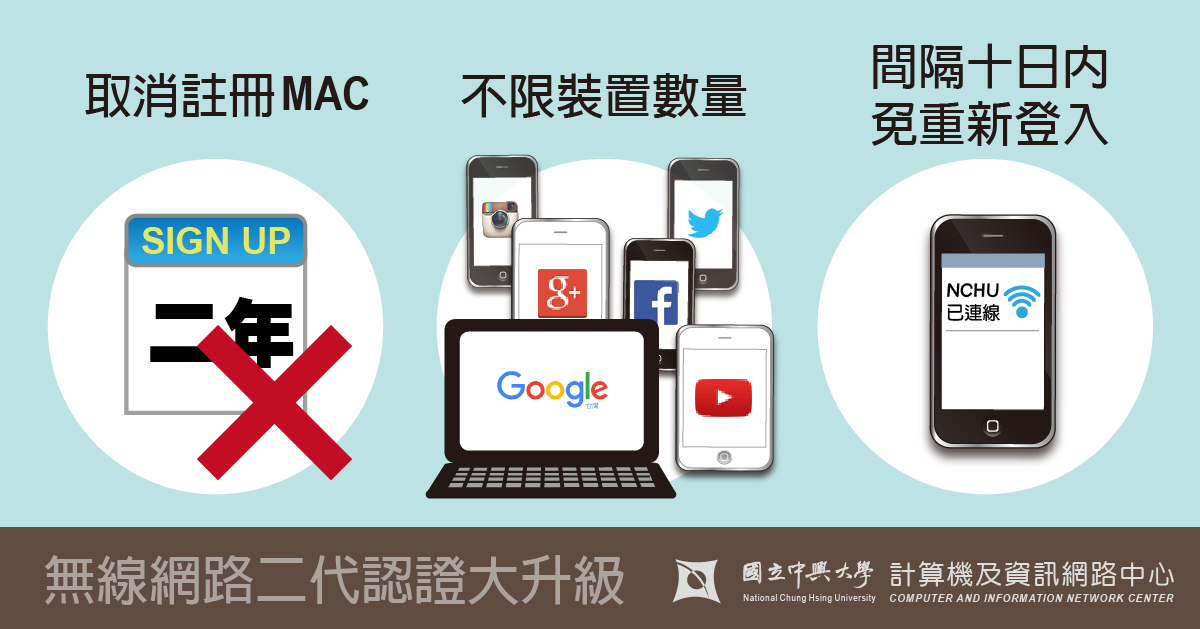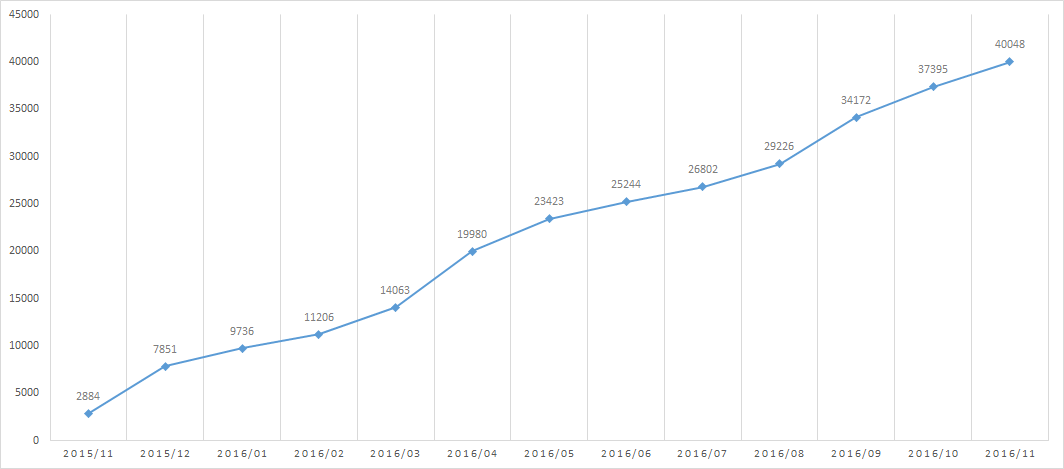"Wireless" access to the WiFi network The second generation authentication system is more convenient
In the past, when we wanted to access the Internet through the campus wireless network WiFi (NCHU), every time we connected, the authentication page would always pop up and require us to enter our account and password before we could log in to the network. This problem must have been very troublesome for users. Additionally, only up to three devices' MAC addresses can be pre-registered, after which authentication is not required for these devices. This was insufficient in the current era of multiple mobile devices such as smartphones and tablets. Therefore, the Computer and Information Network Center has launched the latest second-generation authentication system to address these issues. Have you noticed any recent enhancements in the login interface when accessing the wireless network? Is it now more visually appealing and user-friendly? Next, let's delve into the issues identified in the authentication process and the improvements implemented.
A. Inconveniences of the "old version" WiFi authentication system:
1. Limited usage period for registered mobile devices
Registering the MAC address of your mobile device allows you to access the wireless network without logging in with your account and password for two years. However, the system does not proactively notify users when the usage period expires, leaving them unaware of why they suddenly lose Internet access. Users must eventually realize that they need to re-register their devices before they can regain access.
2. Limited number of registered mobile devices
Each user can register up to three mobile devices. If you replace your mobile phone or laptop, you must first remove the original registered device and then re-register the new device, which involves complicated steps.
3. Requirement to enter account and password for each use
Typing on mobile devices is inherently challenging, and having to repeatedly enter account and password details for each use is inconvenient.
B. The new second-generation WiFi authentication system features three main improvements
1. Canceling MAC Registration
In the old authentication system, the registration of each MAC address was limited to a maximum usage period of 2 years, but now this restriction has been completely lifted.
Note: For laptop users, Remember to set your laptop to "Wireless Network Auto-connect."
2. No limit on the number of mobile devices With the increasing prevalence of mobile devices, everyone is carrying more and more devices with them. Now, the previous limitation of registering only 3 sets of mobile devices per account has been lifted. There is no limit to the number of mobile devices per account!
3. No need to re-enter your account and password within 10 daysAfter selecting 'NCHU' WiFi for login, the device's MAC address (Media Access Control Address) will be automatically stored. As long as 'NCHU' WiFi is continuously used within a ten-day interval, re-entering authentication credentials is unnecessary. Conversely, if 'NCHU' WiFi is not used for over ten days, re-entering the account and password for authentication will be required.
C. Massive Increase in Usage of "Second Generation Authentication"
The Computer and Information Network Center began developing the second-generation wireless authentication system in November 2015 to address existing issues. After numerous rounds of testing and refinement, the system was officially launched in April 2016. Currently, there are 40,048 devices across the entire campus that have utilized this service, with approximately 13,000 devices being used regularly. The system is operating stably, and we extend our gratitude to all campus users for their adoption!
If you have not yet used the "NCHU" WiFi or have refrained from doing so due to past inconveniences, we strongly encourage you to give it a try and experience the convenience brought by the new authentication system!
• Usage Instructions:https://cc.nchu.edu.tw/network-c/wireless_index.html
• Wireless Network Base Station Setup Records:https://cc.nchu.edu.tw/network-c/wireless_ap_setup.html
• FAQs:https://cc.nchu.edu.tw/network-c/wireless_faq.html








